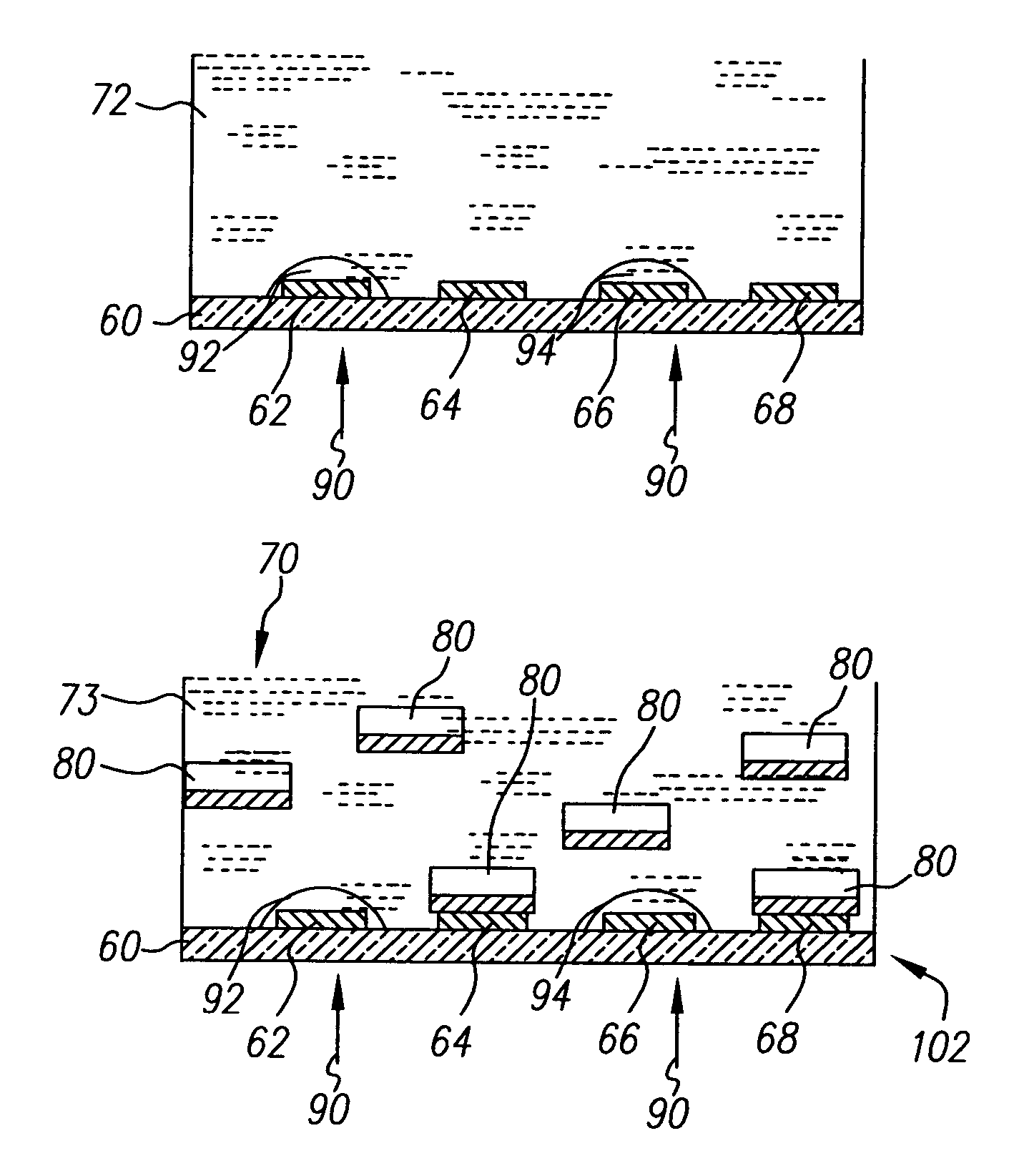Method for assembling micro-components to binding sites
a technology of micro-components and binding sites, which is applied in the direction of fluid pressure measurement, liquid/fluent solid measurement, peptides, etc., can solve the problems of high cost of providing the array of disks on the substrate, the inability to provide the discrimination useful in the assembly of components having multiple types of micro-components, and the inability to apply deterministic methods in a cost effective manner. , to achieve the effect of increasing the viscosity of the firs
- Summary
- Abstract
- Description
- Claims
- Application Information
AI Technical Summary
Benefits of technology
Problems solved by technology
Method used
Image
Examples
Embodiment Construction
[0046]FIG. 2a is a flow diagram of one embodiment of the method of invention. FIGS. 3a and 3b illustrates one example of fluidic self-assembly in accordance with the method of FIG. 2a. As is shown in FIG. 3a, a support 60 is provided (step 105). Support 60 can be, but is not limited to, a flexible support such as polyethylene terephthalate, cellulose acetate, polyethylene, polycarbonate, polymethyl methacrylate, polyethylene napthalate, metal foils, cloth, fabric, woven fiber or wire meshes or rigid supports such as glass and silicon.
[0047]Support 60 has pattern of binding sites shown in FIGS. 3a-3c as binding sites 62, 64, 66 and 68. Each binding site 62, 64, 66 and 68 is adapted so that a micro-component can be assembled thereon, such as by shaping binding sites 62, 64, 66 and 68 to receive the micro-component. Alternatively, support 60 can have binding sites 62, 64, 66 and 68 that are adapted to engage micro-components using, for example, shape matching, magnetic force, electrica...
PUM
| Property | Measurement | Unit |
|---|---|---|
| gel transition temperature | aaaaa | aaaaa |
| gel transition temperature | aaaaa | aaaaa |
| gel transition temperature | aaaaa | aaaaa |
Abstract
Description
Claims
Application Information
 Login to View More
Login to View More - R&D
- Intellectual Property
- Life Sciences
- Materials
- Tech Scout
- Unparalleled Data Quality
- Higher Quality Content
- 60% Fewer Hallucinations
Browse by: Latest US Patents, China's latest patents, Technical Efficacy Thesaurus, Application Domain, Technology Topic, Popular Technical Reports.
© 2025 PatSnap. All rights reserved.Legal|Privacy policy|Modern Slavery Act Transparency Statement|Sitemap|About US| Contact US: help@patsnap.com



